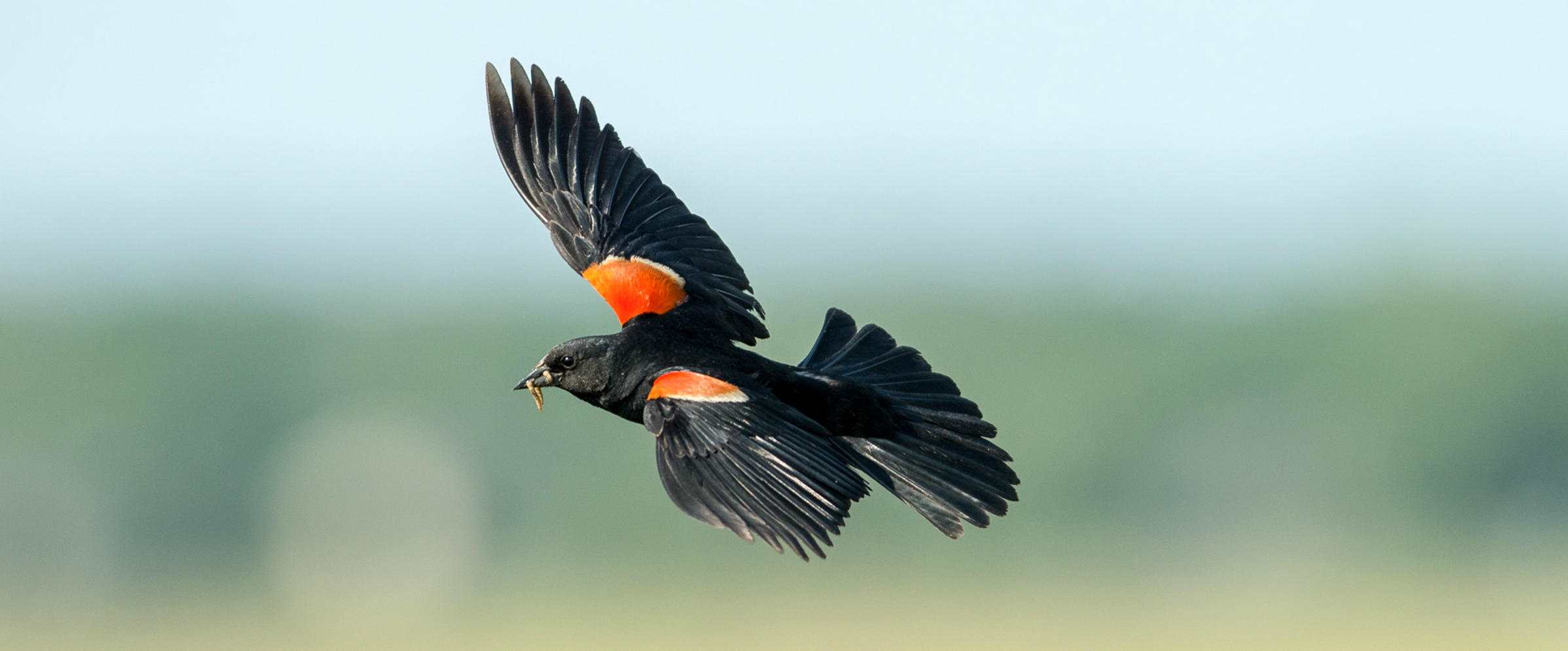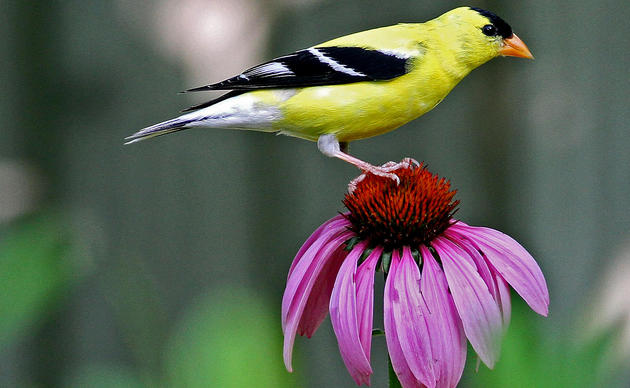Check out our top monthly and seasonal tips below.
JANUARY
- Now is a good time to learn to identify trees by their winter twigs and buds.
- Have fun perusing Audubon's Plants for Birds database to start planning your bird-friendly garden. Refer to the notes, photographs, and sketches you made during the summer to determine the types and quantities of plants needed to boost your schoolyard habitat.
- To reduce injury, allow ice to melt naturally from plants. Attempting to remove ice may damage plants further.
- To gain traction on ice or snow, use sand or sawdust from untreated wood, materials that are less harmful to plants than salt.
- Take note of which areas birds are using for winter shelter and foraging so that you will be sure to preserve them. Also make note of any areas that could benefit from additional vegetation.
- Hang cakes of suet in trees to attract insect-hunting woodpeckers to your garden.
FEBRUARY
- It’s maple sugaring time! Fun fact: it's the freezing nights and mild days that makes the sap flow. Keep an eye out for our Sharon Audubon Center's annual Maple SugarFest - and learn how to volunteer here.
- Collect the wood ashes from your fireplace to use in your compost pile or to sift and add with sand and loam to create a dust bath for birds in summer.
- Late winter storms often bury birds' natural food supplies and a well-stocked feeding station will provide a life-giving haven for our feathered friends.
- Encourage birds to nest in your yard by providing water and by putting up birdhouses. Planting suitable shrubs, trees, vines, and evergreens will provide wild food sources and nesting habitat.
- Participate in the Great Backyard Bird Count. It only takes a few minutes (or as long as you wish) to count birds and help contribute data for science.
MARCH
- Cut back the dead stalks of the seed-bearing grasses and perennials you left standing over the winter and start looking for the sprouting of new growth- spring is around the corner!
- As you carry out your early spring cleanup chores, create a brush pile with fallen branches as a shelter for wildlife.
- Sow seeds of summer annuals indoors, remembering to pick species used by butterflies and hummingbirds.
- Clean up beds by removing all weeds and dead foliage. Then add compost to planting beds.
- Research the different types of homes birds create and which nest boxes you would be good for your yard.
APRIL
- Set your lawn mower height to 3 inches or higher to promote healthy growth. Remove the clippings box and let your clippings act as a mulch for your lawn.
- Celebrate John James Audubon’s birthday, April 26, by planting a native tree or shrub beneficial to birds.
- Hummingbirds return from their winter home in Central America. Fill your hummingbird feeders. Dissolve one part sugar into four parts boiling water. Cool the mixture before setting it out for the birds. Click here to learn more.
- Prepare for spring warbler migration: Learn and listen to audio recordings of the birds’ calls and their migration paths.
- Honeybees are swarming. Learn more about these beneficial insects.
MAY
- Start planting! Plan to plant your garden or habitat before a predicted rain forecast. This will give your plants a boost to help them establish quickly to their new environment.
- Create a butterfly/hummingbird garden. Seek out and attend local nectar plant sales conducted by native plant societies or nurseries.
- Birds eat many insect pests. Attract them to your garden by providing good nesting habitats.
- Install a water drip or fountain mist to attract birds to your birdbath.
- Research the name of a local wildlife rehabilitator (like the Sharon Audubon Center's Wildlife Rehabilitation Clinic) to have on hand in case you see injured or orphaned birds during the upcoming busy breeding season.
- Pollinators such as butterflies are very important for the ecosystem. Help provide a habitat for them by planting milkweed for Monarchs!
JUNE
- If you haven’t already done so, build a compost pile with grass clippings, organic material, and leaf litter.
- Apply organic mulches to your garden plantings. This will conserve moisture, discourage weeds, and enrich the soil as the mulch decays.
- Scout your habitat frequently to detect pest problems early—when control methods are most effective.
- Water new plantings regularly throughout the first growing season (at least 2-3 times per week, especially during dry spells).
- Change the water in your birdbath regularly and keep it filled.
JULY
- While the habitat is in full bloom, take notes and photographs and make sketches to remember what looks good and which areas need additional plants and habitat restoration.
- Keep deadheading spent annual flowers for continued bloom.
- Continue watering and weeding around new plantings.
- If you are at the beach this summer, bring along binoculars and look for shorebirds in marshes and wetlands! Before you explore, make a promise to #BeAGoodEgg.
AUGUST
- Collect your native wildflower seeds as soon as they are ripe. Store them in a paper bag in a cool place, until planting time next spring.
- Assess the areas in your habitat that may need additional plants.
- Continue watering and weeding around new plantings.
- Prepare your bird feeders for the migration season. Clean them using a solution of one part bleach to nine parts water. Rinse well.
SEPTEMBER
- Autumn is a good time to add manure, compost, or leaf mold to garden soils for increasing organic matter content.
- Divide and transplant early-blooming perennials.
- Enjoy migration by going to a local hawk watch. Visit Greenwich Audubon Center's annual Hawk Watch celebration.
- Take a soil sample and send it to your local cooperative extension to determine pH and nutrient levels. If amendments are needed, fall is the best time to apply them.
- Fill your bird feeders. Summer residents need to fatten up before they head south, other migrants will be passing through, and winter residents will recognize the welcome mat and stick around.
- While the weather is still comfortable, install netting, such as fruit-tree netting, in front of windows near feeders to prevent birds from crashing into the window.
- Set up roosting boxes to provide shelter for birds during the winter.
OCTOBER
- After the last broods of the season have fledged, clean out all your birdhouses by removing old nests.
- Add organic matter to the soil by tilling in summer mulch and adding compost or manure.
- Rake fallen leaves under shrubs and into garden beds as a protective mulch layer and as foraging areas for birds. Or, shred fallen leaves with a mower and let them remain on the lawn as mulch. Another option is to simply place collected leaves into your compost along with other garden debris.
- Keep your hummingbird feeders full until two weeks after the last migrant has left.
- Stock up on bird seed and suet for the winter months. Patronize your local Audubon chapter’s seed sale.
- Leave certain garden cleanup chores for the spring. Remove rotted debris to prevent the harboring of pests and diseases, but allow spent grasses and other seed-bearing plants to remain standing throughout the winter as a food source for the birds.
NOVEMBER
- Plant deciduous trees and shrubs up until the ground freezes.
- Set up, clean, and repair nesting boxes for birds.
- Begin sowing seeds that need stratification or old treatment.
- Set up bird feeders. Birds appreciate a source of unfrozen drinking water during the winter.
- Set up a submersible heater in your birdbath to keep water unfrozen and accessible throughout the winter.
- Sign up for Project FeederWatch and become a citizen scientist by counting the birds that come to your feeding station from November to April.
DECEMBER
- After the ground freezes, mulch around perennial beds to prevent heaving during freeze/thaw cycles.
- Decorate the trees and shrubs in your yard with holiday treats for the birds. Make an edible garland by stringing popcorn and cranberries and raisins. Hang dried pinecones slathered in peanut butter and rolled in bird seed. Cut apples into chunks and skewer onto twigs.
- Before the ground freezes, erect nest boxes for next spring. Bluebirds, especially, will check out possible nesting sites in late winter.
- Participate in Audubon’s Christmas Bird Count.
How you can help, right now
Get Involved
There are so many great ways you can get involved with Audubon Connecticut and make a difference for both the wildlife and the people who call Connecticut home.
Visit Our Centers
Connect with our nature centers in Greenwich, Sharon, and Southbury. Each unique center offers trails, educational resources, conservation opportunities, and more.
Support Us
Through land stewardship, science, education, and advocacy, Audubon Connecticut works across the state to preserve habitat and protect bird species that are of state, national, and global concern.





